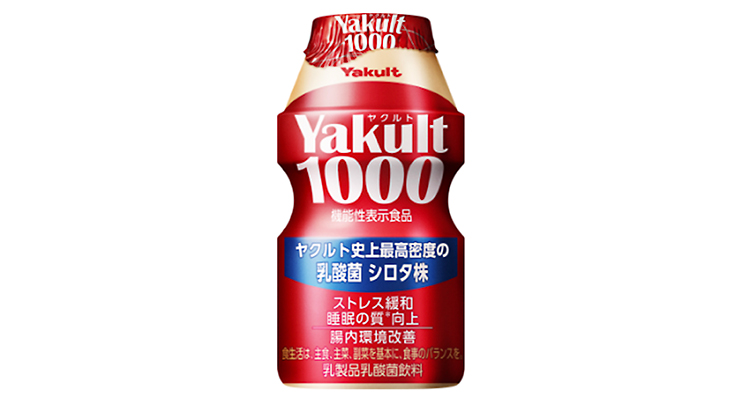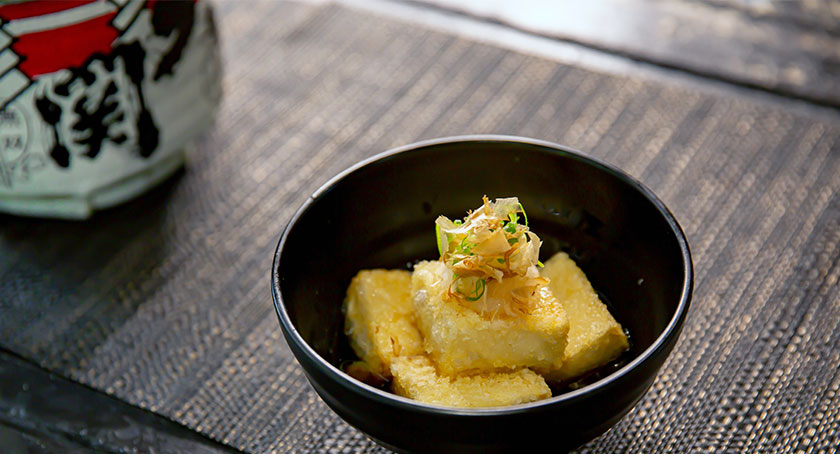Features
Key Trends in Functional Foods for 2024
Young people in particular are hungry for health benefits from food. As nutrition ‘rules’ change and need-states evolve, new business opportunities emerge.

By: Sean Moloughney

Consumer interest in foods that aim to boost mood—helping manage stress, anxiety, and sleep issues—has been around for a long time. These issues are high on peoples’ priority lists. But successful food and beverage products that deliver benefits to address these challenges are rare. That appears about to change.
About 21% of Americans claim to be eating foods that boost their mood and mental wellbeing, according to the latest consumer study from New Nutrition Business. Interest in mood and mind benefits from foods skews younger, with 30% of Americans aged 25-34 motivated by these benefits, compared to just 12% of people over 65.
Added Potential of Probiotics
Probiotics may be one of the ingredients that can make the most of this under-developed opportunity. The gut-brain connection is already discussed in mainstream and social media, while probiotics now have a widely-accepted health halo. So many cultured dairy brands now talk about probiotics, digestive wellness, and immunity that these benefits have ceased to be a point of difference. Adding a mood and mind benefit in addition to a product with digestive benefits will be how more probiotic brands start to widen their appeal.What is possible is shown by Yakult 1000, a 100-ml probiotic dairy drink launched in Japan in 2021 by Yakult Honsha. Yakult is the world’s most successful marketer of probiotic dairy drinks, with over $2.5 billion in annual sales, and has been in the business since the 1950s. Yakult is a huge brand in Asia and South America and is making headway with its regular digestive wellness probiotic in the U.S., where it has over $130 million in sales.
Yakult 1000 is one of the most successful launches of the last two decades, worldwide. Sales are already over $850 million in 2023. The product claims it can alleviate temporary stress, improve sleep quality, and regulate intestinal function. The name comes from the fact the beverage contains 100 billion Lactobacillus casei strain Shirota per 100 ml bottle. This is the same strain used in the original Yakult probiotic dairy drink. In Yakult 1000, the bacteria are present at the highest concentration of any Yakult drink.
Some Western readers might think that Yakult 1000’s success is attributable to marketing. But that would underestimate both Yakult and the Japanese consumer, who has been familiarized with probiotics and their benefits since the 1950s. For a product to succeed in either digestive wellness or with a “mood and mind” benefit, the only way to get repeat purchase is if the consumer believes they can “feel the benefit.” The phenomenal growth of Yakult 1000 and its strong repurchase rates suggests that they do, and that’s also what Japanese consumers are saying on social media.
Another long-established, science-based business that’s driving change is Sweden-based Probi, which has launched a product called Probi Sensia. Said to address mood, sleep, and stress, the probiotic has targeted the brain-mood supplement market, which the company said has grown 30% over the last five years. Sensia is based on the well-documented probiotic strain Lactiplantibacillus plantarum HEAL9.

Yakult 1000 contains 100 billion Lactobacillus casei strain Shirota per 100-ml bottle.
Mushrooms Moving Mainstream
Increasingly, some varieties of mushroom look like they will play an important role in building the mood and mind market. One example is Lion’s mane (Hericium erinaceus), a distinctive-looking fungus that has a long history of use in traditional Chinese medicine. It’s one of several adaptogenic mushrooms, so-called because they are valued in herbal medicine for their ability to help people adapt to stress.Ingredients like mushrooms don’t have mainstream appeal, but the mood-and-mind-motivated consumer is usually younger, well-informed and actively seeking information about foods from many sources—with social media usually the most important. These consumers are people who will already have decided, before they encounter your product in the store, what ingredients and benefits they are looking for.
The mood and mind market is driven by consumer pull, not by marketing push. The founder of granola brand Forij, which uses Lion’s mane, said: “Nobody wants to be sold, but everybody wants to buy. Nobody wants to sit here and listen to me tell them about why they need Lion’s mane, but people may be looking for cognitive supplements and then come to Lion’s mane, and then they come to our site. It’s a way easier transaction, right?”
Forij, based in Seattle, is an entrepreneurial brand offering a unique take on the benefits of adaptogenic mushrooms, incorporating them into granola to create a better-tasting alternative to mushroom teas and supplements. Launched in 2020, the company began selling direct-to-consumer and is now available in stores across the U.S., including Sprouts and Albertsons.

Forij offers a unique take on the benefits of
adaptogenic mushrooms, adding them to granola.
Connecting to ‘Regular Foods’
Another brand leveraging the benefits of a naturally functional ingredient is New Zealand-based Arepa. The company markets a drink, a supplement, and a mix-in powder whose active ingredients include New Zealand blackcurrants (specific varieties that have a very high anthocyanin content), pine bark extract, and L-theanine from green tea. The company has invested in research behind the cognitive health benefits of its ingredient combination. Its claims include: “Keep your brain thinking clear and on task,” and “Designed to help with brain fog, focus, stress and mental blocks.”Arepa is a commercial success. Launched five years ago in just two stores, it is today widely listed in supermarkets, gas stations, and C-stores in Australia and New Zealand. Its success has come because people can feel the difference when they drink it. That advantage—coupled with its “all-natural” ingredients, good taste, great packaging, and clever marketing—has also enabled the brand to break into the Singapore and Japanese markets.
The mood and mind benefit area is one consumers already connect strongly to “regular foods.” Chocolate, for example, is used by many people as a way to lift their spirits. For a functional product, chocolate is a good ingredient partly because consumers already see it as something you consume to feel better and partly because you can do more with flavor to mask any challenging ingredient tastes.
In Japan, for example, confectionery giant Ezaki Glico has created a steadily growing success with its Mental Balance Chocolate GABA brand. The brand makes a claim that it reduces stress. The recommended serving is 28 mg of the active ingredient GABA (or gamma-amino-butyric acid), a type of neurotransmitter that calms the nervous system to reduce anxiety. GABA occurs naturally in chocolate at a low level.
Ezaki Glico has overcome what could have been the problem of a too-science-sounding ingredient by communicating that GABA is naturally present in chocolate, and the company has just boosted the amount to deliver the benefit. First launched back in 2005, in 2019 the brand got a make-over and the range was extended. Today it is a mass-market success, present in every convenience store and supermarket in Japan.

The LoveGoodFats snack brand has reached
$200 million in sales within 5 years.
Healthy Metabolism for Healthy Mind
Metabolic syndrome is a term that refers to the combination of overweight, elevated blood sugar, and elevated blood pressure that puts people’s lives at risk. In this society, it is an epidemic. Consumers don’t use the term “metabolic health” and most don’t know what it means. But most do know that they would prefer not to be overweight or have a future diagnosis of diabetes.Over the last 10 years, research on the links between metabolic health and various psychiatric conditions have grown. Referred to as Metabolic Psychiatry or Nutritional Psychiatry, this field views mental health conditions, at least in part, as metabolic conditions, just like diabetes or obesity.
The concept of nutritional intervention to improve brain conditions isn’t new. The keto diet, let’s remember, is not a recent fad diet. It was created in the 1920s as a medical diet for people suffering from epilepsy. Adherence to a keto diet can reduce the incidence of epileptic seizures by up to 85%. It is still medically prescribed to this day.
Researchers are now going much wider, studying potential beneficial effects of lower carb and higher fat diets in improving various mental health conditions. One advanced area is in the treatment of Alzheimer’s, a condition that threatens to reach epidemic proportions as populations age. Insulin resistance of the brain as a factor associated with Alzheimer’s is so well documented that some researchers have called Alzheimer’s “type 3 diabetes.”
This medicalized approach might seem to be distant from the world of food and everyday consumers. But what starts in medicine and gets results often migrates to something that people learn about on social media.
Blood Sugar Impact
One of the ways that diets for “better mood plus healthy weight” are already growing is through consumer interest in better blood sugar management. Look through social media and you will discover it’s a big subject. One of the best examples of how the message is being taken to consumers is the Glucose Goddess. With over 2.8 million followers, she is a serious and credible influencer, with degrees in biochemistry and molecular and cell biology.She began to research the connection between what you eat and how you feel as a result of her own struggles with poor mood. She educates her followers about different food combinations to help manage blood sugar spikes and therefore result in better mood. She is one of the many sources younger consumers can turn to for good information.
Food executives should note that it is younger women who are embracing the blood-sugar-mood-weight connection the most, coming as they do from a generation that appears to be struggling with anxiety more than any other age group.
Products for better blood sugar management are on the agenda for many companies. There is huge scope for creating ingredient combinations that feature fat and/or protein with less/no sugar to deliver great taste without a blood sugar spike, thus linking to a range of consumer-led benefits, from mood and mind to weight wellness and others.
For example, after a successful test-market, General Mills is rolling out its Good Measure snack brand, which helps to keep blood sugar stable.
NotCo, a plant-based business backed by Jeff Bezos, which uses AI to design its products, has launched a bar that “helps regulate blood glucose,” while also featuring its plant-protein content.
Protein in general, and dairy in particular, are among the foods that have a competitive advantage because of their low impact on blood sugar.
No Fear of Fat
Strong interest in the mind-body connection among young people will drive future demand for products that contain “fewer carbs, more fat,” while not necessarily being keto.This age group is already leading the way in losing the fear of fat, as U.S.-based consumer insights firm HealthFocus International found. Only 21% of 18-29 year-olds thought that reducing fat was healthy, compared to 47% of those over 65s. Younger consumers are helping propel successes such as the LoveGoodFats snacks brand, which has grown from zero to $200 million in sales within 5 years. LoveGoodFats bars often have 13 grams of fat per 40-gram serving.
In the future, companies will bring the twin benefits of weight management and better mood together into the same product. But these products will not carry a claim about weight management. The marketing promise will instead be some combination of “better blood sugar,” fewer carbs, more fat, or more protein together with the mood and mind message, thus achieving a connection to the beliefs of many younger consumers—beliefs that are set to keep growing thanks to social media influencers.
None of this may have any connection to official dietary advice, but it does connect to emerging science and to ideas that are spreading via social media and via word of mouth. This phenomenon reflects the growing diversity of consumers’ beliefs about food and health, which is driven by the ability of people to “do their own research.” This applies to younger consumers, in particular; 52% of consumers aged 18-34 go first to social media for food and health advice. For them, social media is mainstream media.
Collagen, Protein, and Amino Acids
Collagen, a valuable protein, also has good growth prospects. Consumers’ desire for “what works for me” makes them open to innovations.Women of all ages—but particularly Gen Z and younger Millennials—have eagerly embraced bovine collagen for its skin, hair, and nails benefit. That’s even true for younger women who describe their diets as plant-based. Collagen has become a must-have in the morning routine of many. Even Nestlé has gotten into the collagen business.
Demand for collagen is unlikely to go away. Humans are loyal to things that make them feel good and look better. Collagen is actually likely to grow further as more benefits are uncovered. The role of amino-acids—the building blocks of protein—in supporting gut health will become the next benefit platform for collagen. The amino acids found in collagen, particularly glutamine, glycine, and proline, play a role in supporting good gut health. Glutamine is a crucial amino acid that the body needs to support the gut lining. There’s evidence that glycine and proline help improve digestion, reduce inflammation, and promote the growth of good gut bacteria.
Some brands are waking up to this potential. Norwegian bone broth brand Freja markets its product range in the UK, communicating about the skin, hair, nails, and joint benefits. It is now introducing consumers to the wider benefits, such as reducing inflammation and improving gut health. The potential mood and mind benefits of amino-acids are also beginning to appear in communications. Freja explained, for example, how glycine promotes better sleep.
What We’ve Learned
The last 25 years have shown how even the most unlikely ideas can create new markets when they deliver on the health benefits that are the most valuable to consumers. Most successes have come from brands reinventing traditional foods by offering convenience and health benefits.We have also learned that nutrition science evolves and that ideas once considered fringe can become mainstream a decade later. The best example of this is the rehabilitation of saturated fat.
We have seen how many mainstream nutrition “rules” were based on weak or non-existent science and lack credibility. That change in our thinking is set to continue and it will lead to the creation of totally new businesses for everyone willing to keep an open mind.
About the Author: Julian Mellentin is director and founder of New Nutrition Business, which delivers insight and consultancy into the key trends in foods, beverages, nutrition, and health for food, beverage, and ingredients companies worldwide. Visit www.new-nutrition.com to learn more.




















